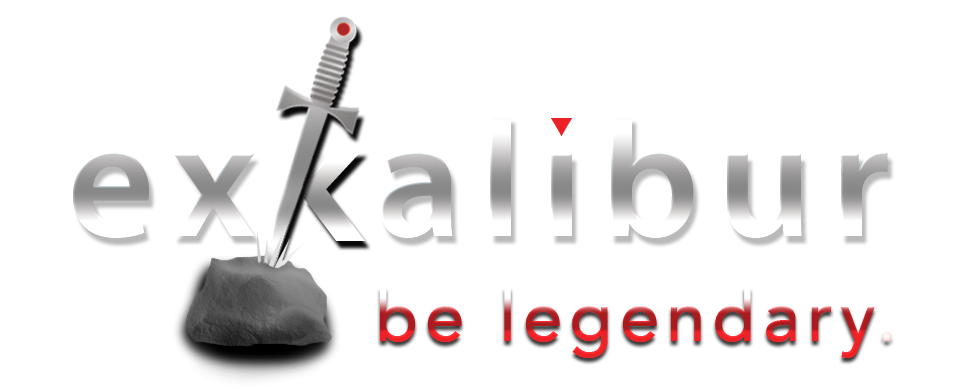Few executives will admit it’s too much trouble to Set Clear Expectations, even for their direct reports
If it’s true for you, make sure you’re prepared for plenty of confusion and mediocre results.

When I talk to executives every day, there’s hardly a conversation that doesn’t include the same 2 things:
- “Why aren’t I getting more done?”, and
- “Why aren’t my people getting more done?”
There are several simple and proven leadership tools that can save your bacon many times over.
Don’t stop just because you’ve heard this before
I’m sure you’ve heard this one before … but I’ll bet your descriptions of goals and objectives, and the Clear Expectations you’ve set for your team members … don’t follow this outline very closely.
It’s an “oldie but goody”, but if you’re saying, “that old thing again”, I’ll give you 5–1 if you can come up with something better for setting goals and objectives.
In fact, I’ll give you 10–1 if you’re actively using it whenever you set goals, objectives and expectations.
It accomplishes exactly what we need … so why aren’t you using it again?
I want to top expectations. I want to blow you away. ~Quentin Tarantino
Why aren’t our people getting more done?
As with the common cold, there’s probably no cure … but there are some things we can do to manage the symptoms.
One tool that will alleviate many of the symptoms is very simple:
SET CLEAR EXPECTATIONS
When I hear daily complaints about the lack of accountability within the organization … and ask if clear expectations have been set so that there is no misunderstanding about what needs to get done … I usually get the thousand yard stare.
I really don’t have the time to do all of this
What do you think you’d find if you compared the time it takes to SET CLEAR EXPECTATIONS … to the time you spend chasing people down who aren’t doing what they’re being asked because you’re not on the same page about what they’re supposed to do?
When this comes up, I often see someone tap their forehead and say,
- “I know exactly what they’re supposed to do and they know it, too. I’ve told them a dozen times.”
For others, a goal is simply a mirage. They use phrases like, “It’s just a goal” when they describe it.
You might just as well tell the listener not to pay any attention at all.
We’re always sharing valuable and practical productivity tips to help you become a More Effective Leader. Check out my FREE mini-course 5 Tools I Can’t Live Without and get ready to up your game. I’ve used these tools every day for years. They’ve made a huge difference in boosting my productivity and keep me on top of my game.
How can you be sure you’re clear?
When I say to executives,
- “Shall we go and see if it’s as clear in their head as it seems to be in yours?”,
our conversation turns to whether any of this has been written down so there is a clear and indisputable reference point.
- “As soon as I get a chance I will write it all down ….”
is a typical the response, but tomorrow never comes. It speaks volumes about why people aren’t getting done what you expect.
Let’s be a little S.M.A.R.T.er about it
Each of these 5 letters identifies a special attribute … but in this case, the whole is certainly greater than the sum of its parts.
Don’t stop here and say,
- “I got this. I’m well aware of this S.M.A.R.T acronym.”
Keep reading because I want you to capture the essence of HOW YOU CAN APPLY THESE TERMS in a meaningful way.
I promise you that if you set goals and objectives for your organization and the individuals in it, using this simple S.MA.R.T. acronym, you’ll be farther ahead than most.
1. SPECIFIC
What is the SPECIFIC goal to be achieved?
Avoid being too general.
The more precise the target, the greater the commitment to follow through. It isn’t enough to say
- “We need more sales in your territory”.
Say something like,
- “You need to increase sales in your territory by a minimum of 6.5%.”
2. MEASUREABLE
The goal or objective must be measured in terms of cost, quality, quantity, and timeliness … here’s a news flash … something that can actually be measured.
Executives really struggle with this one, particularly where the objective is a “soft” goal. Consider this example:
- “I need you to be more active in the industry.”
- “I need you to be more supportive of your teammates.”
- “I need you to focus more on developing your people.”
Yes, the theme of those expectations is pretty clear, but how success will be measured is AWOL.
What gets measured, gets managed.
Once again, it isn’t enough to say
- “I need you to be more active in the industry.”
You need to be more specific, something like
- “Find three opportunities to speak to industry groups and three more industry conferences and meetings to attend, at least one of which will allow us to set up a booth or table to meet prospective customers.”
You can measure that.
Think creatively to come up with away to measure success.
Remember: Whatever gets measured, gets managed.
3. AGREED UPON
Goals should be jointly established rather than imposed.
When clear expectations aren’t agreed to in advance, you’ll learn why that’s important during the very first performance review.
It won’t take long for that conversation to turn to confusion and misunderstanding about what the goals and objectives were in the first place.
If they’re agreed to, written down and regularly refreshed, it’s pretty hard for one of the parties to say they didn’t understand the objectives.
4. REALISTIC
The goal needs to be “realistic” so it can actually be achieved.
Using our earlier example, it’s probably unrealistic to say,
- “raise sales in your territory by 75%”, or
- “speak at 15 industry events this year (unless that’s someone’s primary job).”
Set realistic goals that provide a challenge and stretch the employee, but make sure they’re attainable.
If they’re not, no one will pay much attention and you’ll venture into the quicksand of “It’s just a goal”.
I’m regularly sharing new Productivity Tips to help you get more done. Each Productivity Tip is a remarkably simple tool or concept that can be quickly implemented to make a real difference. Jumpstart your productivity, improve accountability and stay focused on the things that matter the most. Check out these valuable Productivity Tips
5. TRACKABLE
A well-defined deadline for when the project must be accomplished adds a sen
se of urgency … but it’s often more valuable to set a TIMELINE rather than a deadline.
This allows you to follow up BEFORE the deadline to make sure things are on track and if not, to re-negotiate the deadline so everyone can succeed.
If you’re only tracking deadlines, you’re likely to catch up to it too late to help.
If this is all too much trouble … the climb will be steep!
When it comes to achieving Accountability within your organization, there is no substitute for SETTING CLEAR EXPECTATIONS.
If you do this, you’ll will take THE most important step in leading and managing your people … because there will be no doubt about what’s expected.
When that is firmly set, it’s much easier to get more done … for everyone.
Question: How does Accountability work in your organization? Have you found a tool or approach that works well for you? Share your thoughts by visiting our Facebook Page or @Exkalibur on Twitter. Let’s figure this out together.




